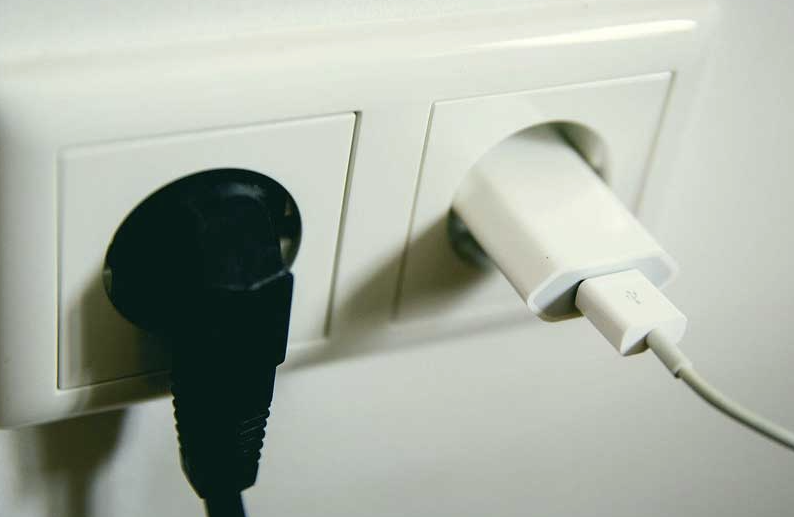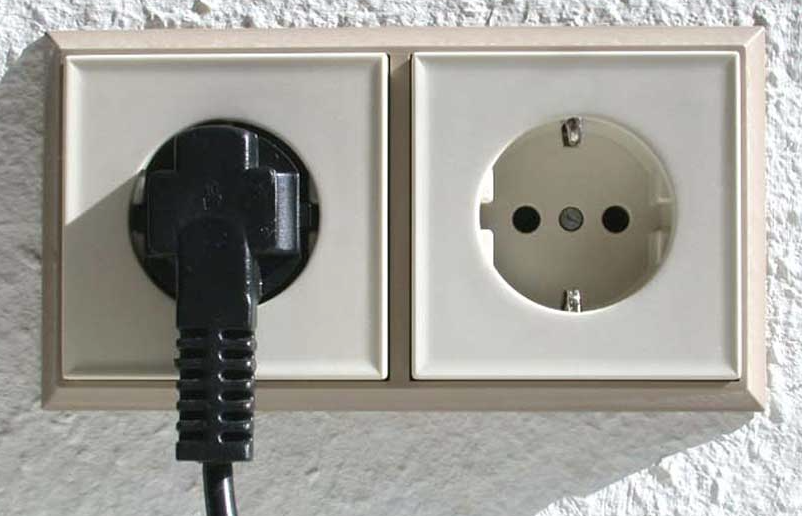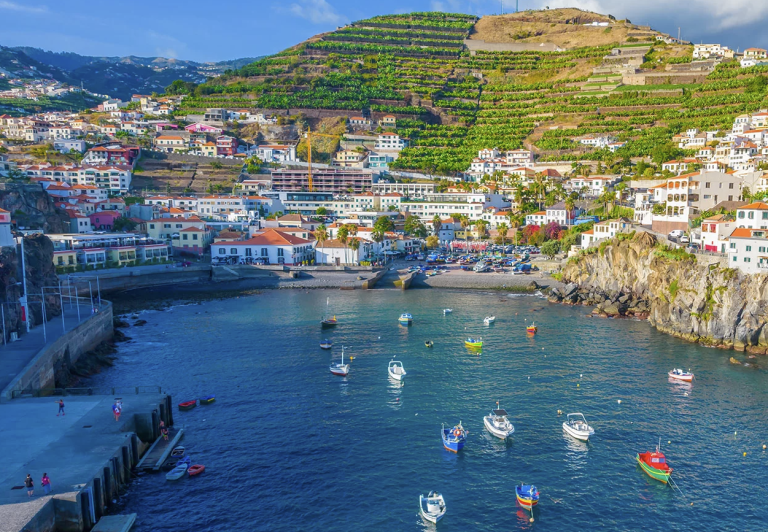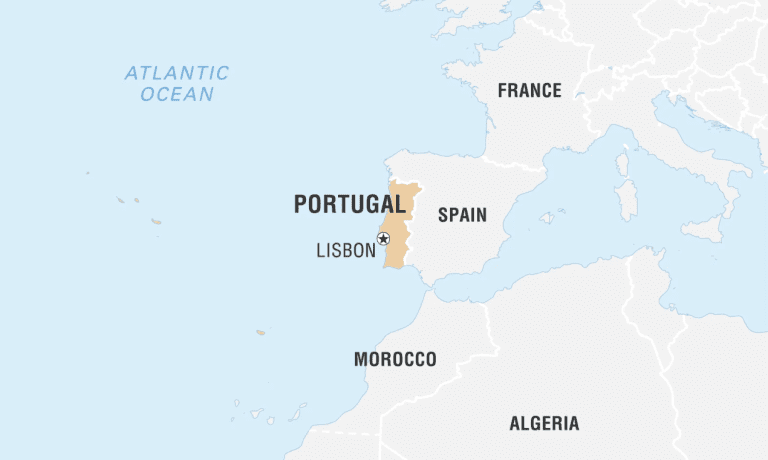What plugs do they use in Portugal? It’s a question that has puzzled many a traveler.
It’s not an easy task to figure out what plugs are used in Portugal. There are different types of plugs, voltages, and frequencies to consider.
In fact, it can feel like you’re trying to solve an electrical Rubik’s Cube!
But don’t worry! We’ve got the lowdown on what plugs they use in Portugal, so you won’t get your wires crossed on your next trip.
Power Plugs and Electrical Outlets in Portugal
So, you’re jetting off to the beautiful country of Portugal. Amidst dreaming about exploring historic castles or lounging on sun-kissed beaches, there’s a crucial detail not to overlook – understanding their electrical system.
In this fascinating corner of Europe known for its pastel-colored buildings and delectable custard tarts, they operate on a 230V supply voltage with a frequency of 50Hz. And if those terms sound like techno-babble right now, don’t worry. We’ll break it down into bite-sized pieces soon enough.
The Lowdown: Voltage & Frequency Explained
Voltage is essentially how much ‘oomph’ electricity has when pushed through wires, while frequency denotes how often an alternating current switches direction per second (think of it as the rhythm section in your favorite band). In plain English – higher voltage equals more power; different frequencies equate to varying speeds at which electricity flows.
This means that the standard voltage in Portugal (230V) might be twice as high compared to some countries such as the USA or Japan, where only 110-120V systems are used. Similarly, most North American nations operate at 60 Hz, whereas European countries, including our star performer today Portugal operate at a slightly slower pace, i.e., 50 Hz.
Type C & F Power Plugs: The Unsung Heroes
Meet Type C plugs – the humble roadies behind every successful gig across various regions within Europe, including naturally – you guessed it – Portugal. These ungrounded plugs have two round pins spaced approximately 19mm apart center-to-center – a design that fits perfectly into any socket accepting type E(F) Europlug tops among others, making them ideal for travel.
Moving onto Type F plugs – they come equipped with grounding clips, providing added safety against electric shocks, especially useful for appliances requiring substantial amounts of energy such as heaters or kettles, etcetera. Their compatibility extends beyond Portuguese sockets all the way up north towards Germany too.
Don’t let the techno-babble of voltage and frequency trip you up. Portugal uses a 230V supply at a 50Hz pace, which is higher and slower than some countries like the USA or Japan. Also, remember to pack Type C and F plugs for your gadgets.
The Need for Travel Adapters in Portugal
Imagine landing at Lisbon Airport, you pull out your phone to capture the picturesque surroundings only to realize it’s running low on battery. You reach into your bag for a charger and…uh-oh. Your plug doesn’t fit Portuguese sockets. That’s when travel adapters become an essential part of any globetrotter’s toolkit.

In essence, these handy devices bridge the gap between foreign electrical socket designs and our home country plugs, ensuring uninterrupted device usage during travels.
Purchasing Trustworthy Travel Adaptors: The How-To Guide
Getting reliable Portugal travel adaptors before stepping foot onto that plane is not just convenient but also smart traveling. Platforms like Amazon offer myriad options suitable for different types of appliances and gadgets.
Bear in mind though – certain high-powered single voltage rated appliances such as hairdryers or curling irons might require more than mere adapter plugs converting socket shape; they may need voltage conversion too.
We’ll explore this in more detail later, so stay tuned.
A Proactive Approach Towards Compatibility Issues
No one likes unpleasant surprises, especially during vacations abroad. Hence, checking each appliance’s rating plate prior to packing them up can save much hassle down the line.
This information usually resides on its backside or underside, indicating whether it operates at dual-voltage (110/220V) or single-voltage mode (110V/220V).
If marked 100-240 VAC (Voltage Alternating Current), voila. They’re ready-to-use anywhere across the globe, including Portugal, with appropriate travel adaptors matching the local socket design sans additional converters.
Decoding the Mysteries of Voltage Converters and Transformers
Voltage converters and transformers may sound like something out of a science fiction novel, but they’re actually your best friends when it comes to using UK electrical appliances in Portugal. They’re the unsung heroes that keep our beloved gadgets from turning into expensive paperweights.
In essence, voltage converters are nifty devices that adjust the power output of an electrical source. Imagine you’ve brought along your favorite hairdryer designed for 120V (standard US voltage). Plugging this into Portugal’s robust 230V supply without a converter is like giving espresso shots to a hamster – not pretty.
A transformer plays a similar role but is more suitable for high-wattage appliances like curling irons or electric kettles. There are two main types: Step-up transformers boost lower voltages, while step-down ones reduce higher voltage.
The Art Of Buying Voltage Converters
Purchasing voltage converters isn’t rocket science, but it does require some thoughtfulness. You need one that is tailored to both Portuguese standards and the specific requirements of your devices – kind of like finding Cinderella’s slipper.
You’ll want to consider factors such as the maximum power rating. Make sure that whatever converter you choose can handle all single-voltage rated appliances you have with you. In other words, check if its wattage matches or exceeds the pesky little numbers written on the backside label of each appliance.
Dual Voltage Rated Appliances vs Single Voltage Rated Appliances
Before you jet off to Portugal, let’s talk about dual voltage rated appliances and single voltage rated appliances. Grasping the distinction between dual voltage and single voltage appliances could drastically alter your itinerary.
A dual voltage appliance is like the superhero of electrical devices – it operates on two different voltages (110-120V and 220-240V) without needing any special gadgets or gizmos. It usually comes with its own switch that lets you choose between saving the day in America or Europe.
Single-voltage rated appliances, however, are more like homebodies. They prefer their one specific supply voltage and if they’re taken out of their comfort zone – say from an American 120 volts to Portugal’s standard power supply of 230 volts – well then things could get dicey unless there’s a voltage converter.
Your Appliance Type: A Mystery No More.
Finding out whether your device is a globe-trotting superhero or stay-at-home type isn’t as hard as cracking Da Vinci’s code. Just check its rating plate. If it reads “110/220 volts,” congratulations – you’ve got yourself a dual-volt gadget ready for worldwide adventures.
If instead, it states something along the lines of “120 volts,” buckle up because we’re dealing with some serious homesickness here which will require some extra TLC in form converters when plugging into Portuguese outlets running at higher voltages than this little guy can handle.
The Dual-Volt Advantage
Dual-volt devices aren’t just convenient – they’re also luggage savers. With them by your side during travels through European countries including Portugal means less baggage weight due to lack need additional equipment such transformers electricity supplies worldwide adaptors etcetera… You name it..
All needed do ensure set correctly according each country standard before plug-in time arrives… And voila… Ready go wherever heart desires without worry whatsoever regarding compatibility issues local electric systems abroad indeed…
Cautious Considerations For The Homebody Devices:
Moving our dear old single-rated items across borders requires careful consideration especially while traveling through places where standards differ greatly
Before jetting off to Portugal, know your appliances. Dual voltage devices are travel-friendly superheroes operating on both 110-120V and 220-240V. Single-voltage ones need a converter for the Portuguese standard of 230 volts. Check your device’s rating plate to determine its type and pack accordingly.
Checking Your Appliance Rating Plate
Your adventure to Portugal is just around the corner. But, wait. Have you checked your electrical appliances’ rating plates yet? If not, let’s do it now – because nobody wants a fried laptop or hairdryer on vacation.
The appliance rating plate is usually tucked away at the back of your device or sometimes printed directly onto its plug. It contains essential details about voltage and frequency requirements for safe operation in foreign lands like Portugal.
Finding The Elusive Rating Plate
You might be scratching your head wondering where this mystical ‘rating plate’ could be hiding. Fear not. For smaller gadgets such as laptops and phone chargers, check out their plugs – that’s often where these specs are detailed.
If you’re hunting down information for larger devices like televisions, try looking at the rear panel; there should be some kind of tag with all necessary power supply data attached. (source)
Decoding Information On The Rating Plate
Figuring out those numbers may appear baffling if you don’t understand what they signify. Here’s how to decipher them: Devices marked “100-240V” are dual voltage rated appliances, which means they’ll happily work with any standard voltage worldwide without needing extra gear (read: converters).
If, however, it only shows one number (like “120V”), then that’s a single-voltage rated gadget which will need either an appropriate converter or transformer when used in higher voltage countries like Portugal.
Tips To Remember When Checking Your Appliances
- All Devices Are Not Created Equal: Even though two devices may come from the same brand stable, it doesn’t mean they share identical specifications – always verify each separately.
- Jot Down Details: Maintain a list of items requiring travel adapters or converters so nothing gets overlooked while packing up for Portuguese escapades.
- Last-Minute Hassles Be Gone.: Spare
Before jetting off to Portugal, check your devices’ rating plates for voltage requirements. They’re often on the plug or back of the device. Devices marked “100-240V” are good to go worldwide; single-voltage gadgets may need a converter in higher voltage countries like Portugal. Don’t forget any.
Schuko Plug – A Common Power Plug in European Countries
When it comes to power plugs, the Schuko plug or Type F is a popular choice across many European countries, including Portugal. It features two round pins for live and neutral connections and does not require an extra pin for grounding. Instead, it uses clips on the socket sides for grounding.
The symmetrical design of the Schuko plug allows for easy insertion into the socket in either direction, saving time and avoiding confusion. Despite the bidirectional nature of the plug, switching off an appliance does not always disconnect it from mains power.
Digging Deeper: The Design Features of The Schuko Plug
The Schuko plug has a standard voltage rating of up to 230V and a frequency of 50Hz. It is designed to handle up to 16 amps safely, making it suitable for most electrical appliances during your travels or for domestic use if you call Europe home.
In addition to its functional capabilities, the Schuko plug incorporates safety measures such as childproof sockets and insulation around each pin’s base, ensuring reliability even under heavy-duty conditions. source.
A Closer Look At Safety Measures Incorporated Into Its Design
In today’s world, where children’s safety is a top priority, especially when it comes to electricity supplies, Schuko outlets are equipped with shutters to prevent foreign objects from entering, reducing the risk of accidental contact with live parts inside the outlet. source.
Furthermore, the Schuko plug has an additional layer of insulation around the base of each pin, preventing any possibility of touching live metal parts while inserting or removing the plug, providing an extra shield against electric shocks.
Pitting The Schuko Against Other Plugs Globally
If you frequently travel around the globe, you may have noticed differences between Schuko plugs and other commonly used plug types. For example, unlike UK electrical
In Portugal, the Schuko plug or Type F is commonly used. It’s a two-pin design with grounding clips on the socket sides and can be inserted in either direction. With safety features like childproof sockets and extra insulation, it ensures reliable power supply for your devices while traveling.
The Impact of Frequency Differences
Pack your sunscreen and flip-flops, but don’t forget to consider the frequency of electricity in Portugal – 50Hz. Have you considered the frequency at which electricity is supplied? In Portugal, this stands at 50Hz – a seemingly insignificant detail but one with potential consequences.
In many regions around the globe such as North America and parts of Asia, they operate on a different electrical frequency of 60Hz. If these are home territories for you or your devices, then beware. There could be some sparks flying in Portugal.
Frequency: The Unseen Puppeteer
Different frequencies have varying impacts on appliances. For example, mains-powered digital clocks, using power cycles per second as their time base, will run faster if expecting 60Hz while receiving only 50Hz.
Your trusty alarm clock might turn traitor under lower than expected frequencies, causing havoc by setting everything ahead of schedule. And anything motor-driven (think hair dryers or electric toothbrushes) may start moving slower due to reduced frequency input.
Solutions: Dual-Frequency Devices & Converters
If single-frequency devices make up most of what’s going into your suitcase, consider investing in frequency converters. These clever gadgets help match device needs with local supply conditions.
Better yet? Go dual-frequency whenever possible – these versatile tools operate efficiently whether plugged into a socket supplying electricity at either rate.
Navigating Power Struggles Abroad:
- Carefully check labels on each appliance before traveling – ensure compatibility both voltage AND frequency-wise.
- Purchase dual-frequency versions wherever available.
- If necessary, invest in high-quality .
Making sure our beloved electronics continue working optimally during travels requires more than merely stuffing them into luggage – we need to understand exactly what kind of energy supply awaits us abroad.
Don’t let your electronics fizzle out in Portugal. Remember, they operate at a different electrical frequency (50Hz). Ensure your devices are compatible or consider investing in dual-frequency versions and converters. Your trip shouldn’t be remembered for the wrong sparks flying.
Maximizing Your Electrical Safety While Traveling
A journey isn’t just about the destination, but also ensuring a safe voyage. When traveling, electrical safety should not be taken lightly.
Take note of the maximum power rating of your devices – this little number can be found on each device or its manual and plays an essential role in keeping you safe abroad. Remember that pushing an appliance beyond its limits is like asking for trouble – overheating could lead to sparks flying (and not in a good way).
If Portugal’s standard 230V supply voltage has got you scratching your head wondering if it’s too much for your hairdryer from home, consider consulting with professionals or reaching out directly to manufacturers before jetting off.
No Room For Extra Guests: Avoid Overloading Sockets
An overloaded socket is as welcome as unexpected guests at dinner time – both scenarios are bound to end up messy. In foreign lands such as Portugal where sockets come adorned with two round pinholes (Type C) or even earth clips (Type F), remember one plug per socket unless stated otherwise.
The Well-being Of Your Appliances Matter Too.
Damaged cords and plugs might seem insignificant until they’re sparking danger right before your eyes. Before plugging into any foreign electrical outlet, give those appliances some TLC by checking them over thoroughly; frayed wires and cracked casings need fixing back home first.
In case you missed our earlier post ‘Understanding Voltage Converters And Transformers’, let us remind you how handy these transformers electricity supplies worldwide can be when dealing with single voltage rated appliances while traveling through places like Portugal.
The choice between purchasing new dual-voltage-rated equipment versus investing in converters depends on how often you plan on making trips overseas. Frequent travelers may find the former option more cost-effective in the long run since they won’t have to keep buying converters every trip.
But don’t forget to always check product descriptions carefully to ensure the chosen transformer is suitable for its intended purpose because not all models are created equal.
Remember, though, to never exceed the maximum power rating indicated for each individual piece of equipment under any circumstances.
Traveling to Portugal? Mind your gadgets. Check the power rating of your devices and avoid overloading sockets. Damaged cords need fixing, and consider voltage converters for single-voltage appliances. Frequent travelers might find dual-voltage equipment more cost-effective. Remember: safety first.
The Role of Power Supply in Traveling to Foreign Countries
Traveling to foreign lands is a thrilling adventure. But it’s not all sunsets and postcard moments, especially when your phone battery dies right as you’re about to capture that perfect shot. Why? Because each country has its own unique power supply system.
In the realm of global trotting, Portugal stands out with specific requirements for their electrical systems. This article will enlighten you on how understanding different power supplies worldwide can make or break your travel experience (literally.).
A World Plugged Differently: Understanding Electrical Outlets and Plugs
You’ve landed in beautiful Lisbon only to find out that the plug from back home looks like an alien object here. Different countries have distinct types of electrical outlets and plugs. For instance, Portugal uses Type C (Europlug) or Type F (Schuko plug).
This means packing isn’t just about clothes anymore; one must include suitable Portugal travel adaptors compatible with these foreign electrical sockets. It ensures uninterrupted connectivity for charging phones or using appliances without any hassle.
Voltages – Not All Are Created Equal.
Beyond differing outlet designs across nations lies another critical factor affecting device usage – voltage standards differences. Most European countries, including Portugal, operate at 230V supply voltage, which contrasts starkly against places like the USA operating at 120V. The World Standards Electricity guide offers comprehensive information regarding this aspect globally.
If a lower voltage designed appliance meets higher voltages unexpectedly… let’s just say it won’t be pretty. Hence carrying along a reliable voltage converter becomes essential, particularly when dealing with single-voltage rated appliances incompatible with the host nation’s electricity system.
Dual-Voltage Appliances – The Globetrotter’s Best Friend?
To avoid juggling between converters, transformers, etceteras, consider investing in dual-voltage rated appliances whenever possible. These devices are specially engineered so
FAQs in Relation to What Plugs Do They Use in Portugal
What Plugs Do They Use in Portugal?
Planning a trip to Portugal and wondering what plugs they use? Our guide explains the power outlets, adapters, and voltage converters you’ll need for your devices.
What Kind of Adapter Do I Need for Portugal?
You’ll require a Type C or F travel adapter for Portugal. These adapters accommodate the two round pin plugs used in the country.
Does Portugal Use the Same Outlets as the US?
No, Portuguese outlets are different from those in the US. The standard voltage is 230V, and the frequency is 50Hz in Portugal, compared to 120V and 60Hz in America.
Are Plugs in Portugal the Same as Europe?
Largely yes, but not always. While most European countries, including Portugal, use Type C or F plugs (Schuko plug), some exceptions like the UK and Ireland have different systems.
Do You Need a European Plug for Portugal?
Absolutely. You will need either a Type C or F (European) plug when traveling to this beautiful country.
Conclusion
From the Schuko plug to voltage converters, you’ve journeyed through the ins and outs of Portugal’s power supply.
You now know that they use Type C and F plugs in Portugal.
We’ve also explored how your devices’ voltage ratings can affect their compatibility with Portuguese outlets.
The importance of checking your appliance rating plate before travel has been emphasized too.
Frequency differences have been discussed as a potential issue when using foreign electrical appliances in Portugal.
Safety tips for handling electricity abroad were shared, underscoring the need not to overload sockets or use damaged cords or plugs.
In essence, we’ve demystified what seemed like an electrical Rubik’s Cube!
Our nomadic lifestyle blog is here to guide you on such practical matters every step of your journey.
Remember: understanding local power supplies like “what plugs do they use in Portugal” is just one aspect of traveling smartly.







